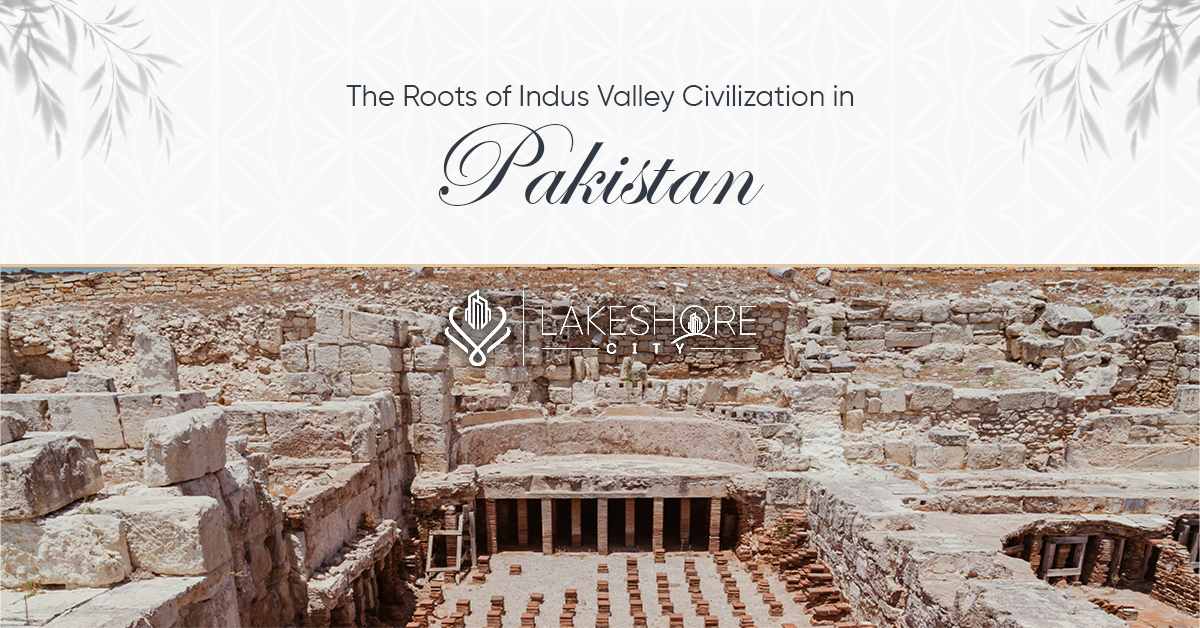Pakistan is proud of its historical history, and one of its crown jewels is the Indus Valley civilization, which represents the first example of urban development.
One of the oldest civilizations in human history, the Indus Valley civilization dates back 5,000 years. It flourished for roughly 700 years, from 2600 to 1900 B.C. The entire society, which includes about 400 habitation sites, covers an area of one million square kilometres and is spread among several nations, including China, Pakistan, India, Iran, Afghanistan, and Russia. The Indus Valley civilization got its name because these towns were regularly observed to be near the River Indus’s banks and those of its tributaries.
Many archaeologists think that the Indus Valley civilization came from Mesopotamia, in Iraq, and that its members traded goods and services via land connections with the surrounding areas of what are now Iran, Iraq, Turkmenistan, and Afghanistan. It was unknown then, but these individuals were the first to develop international trade. Some people think that this was a “pristine” civilization, which is a society that developed naturally without being influenced by immigration, conquest, or other cultural exchanges.
However, their genesis has not yet been established and is still the subject of theoretical conjecture.
The sophisticated urban development found in the excavated towns of the Indus Valley civilization distinguishes it from other ancient societies of that era. Roads, alleyways, grid-style neighbourhoods, water channelling, and much more were included in this.
For both archaeologists and historians, two of the civilization’s principal towns that were excavated in Pakistan have enormous historical significance. These archaeological sites, known as Mohen-jo-Daro and Harappa, have been identified as two of the principal urban centres for the inhabitants of those eras and are popular adventure travel locations in Pakistan.
Continue reading to learn more about Pakistan’s significance to this civilization.
Harappa
The ancient Ravi River bed in Sahiwal, Pakistan, is home to the previously known Harappan Civilization, which was discovered in the 1920s. This is around 160 kilometres to the southwest of Lahore.
The Bronze Age metropolis, with an estimated population of around 23,000, was discovered to have been constructed on somewhat urbanized architectural plans upon excavation. Workers’ quarters were located on the eastern side of the city in a grid-lock-style block with brick floors, demonstrating that Harappa’s civil engineering had advanced. A citadel with a tall rampart made of mud and brick was found inside the city, perched on a hill near the western boundary.
The manner of the brick-built metropolis of Mohen-jo-Daro and the Harappa site demonstrated how advanced and futuristic the Indus Valley civilization was for its time. The city is currently in ruins for historians and tourists to examine, with the belief that a large portion of the bricks were either taken or destroyed during the British occupation.
Mohen-jo-Daro
In the local Sindhi language, the name “Mohen-jo-Daro” literally means “the mound of the dead.”
It is located close to Larkana, Sindh, Pakistan, on the banks of the Indus River. From Karachi, the main city, it takes about seven hours to get there by car.
Mohen-jo-Daro, one of Pakistan’s most visited ancient heritage sites, was excavated in 1924 by a British archaeologist named John Marshall. It has also been named a UNESCO World Heritage Site.
The city, which is regarded as one of the principal urban centres of the Indus Valley civilization, was constructed using a sophisticated urban road planning system and large-scale building constructions akin to those of Harappa. The structures are constructed using sun-dried mud bricks and timber supports in a rectilinear grid pattern. The roadways that were found in Mohen-jo-Daro were wide avenues with brick pavements, elaborate irrigation systems, and public baths. Numerous craft remnants, ceramic ruins, stones and gems, idols, coins, statues, and bricks were discovered at the archaeological site. The most well-known artefact found here is a bronze sculpture depicting a “Dancing Girl,” an adolescent female wearing little clothes and bracelets.
The estimated 30,000–40,000 people who lived there are thought to have grown crops like barley, wheat, certain legumes, and cotton, as well as stored water in enormous tanks.
The Great Bath is the most well-known building at Mohen-jo-Daro. The Great Bath, a large, rectangular structure measuring 39 feet in length, is claimed to be utilized for public bathing and is thought to be used for ritualistic purposes. There are steps that down to an almost eight-foot-deep pool. In addition, this location, like Harappa, has a citadel that is perched above the ground and is thought to be utilized for ritualistic and religious purposes.
Since Mohen-jo-Daro’s structure appears to have been built to withstand flooding in the past, archaeologists speculate that the city may have been destroyed by floods. Evidence points to the city experiencing catastrophic floods over unusually long periods of time, maybe as a result of riverbank encroachment.
For all travellers and explorers, the Mohen-jo-Daro and Harappa cities provide an unforgettable and instructive experience. They are two of the oldest and most historically significant tourist destinations of the Indus Valley civilization in Pakistan.
Our Featured Article:
Read More: Govt Endeavors to Promote Religious Tourism: Aneeq
Don’t miss the chance to invest with Lakeshore! Secure your investment today by investing your financial investment with Lakeshore in the following available options like Lakeshore City, Lakeshore Club, and Lakeshore Farms.
For More updates, please Contact +92 335 7775253 or visit our website https://lakeshorecity.com/
Lakeshore City is the upcoming elite lifestyle at Khanpur Dam. Offering no parallel amenities for the members and owners of distinguished farmhouses.
Become Part of Luxurious Lifestyle
Contact: 0335 7775253



